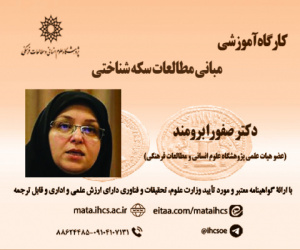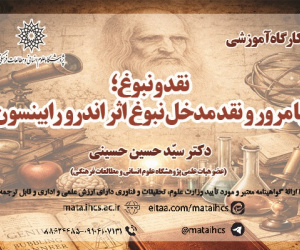منبع یابی روایات التبیان شیخ طوسی (مقاله علمی وزارت علوم)
درجه علمی: نشریه علمی (وزارت علوم)
آرشیو
چکیده
شیخ طوسی در تفسیر التبیان 1,034 روایت از معصومین (ع) نقل کرده است. بررسی تطبیقی این روایات با دیگر منابع شیعه و سنّی می تواند منابع التبیان را هم مشخص کند؛ زیرا شیخ به ندرت نام منبع روایات خود را ذکر کرده است. در این پژوهش بر اساس سند و الفاظ متن روایات تفسیری در التبیان، و با توجه به قرائن دیگر، احتمال اخذ روایت را از منبع مربوطه مسجل نمودیم. منابع روایات تفسیر التبیان به چند دسته تفاسیر شیعه و سنّی، کتب حدیثی شیعه و سنّی و روایات مشترک بین منابع (منابع مختلف حاوی روایت مشترک) قابل تقسیم اند. شیخ طوسی نخستین مفسری است که با رویکرد تطبیقی شیعی- سنّی در تفسیر، از منابع اهل سنت به خصوص تفاسیر اهل سنت به وفور حدیث اخذ کرده است. یکی از پراستناد ترین منابع تفسیری در تفسیر التبیان، جامع البیان طبری است که قریب یک چهارم روایات این تفسیر مطرح شیعی را به خود اختصاص داده است و پس از آن، المصابیح وزیر مغربی، از مهم ترین و اصلی ترین منابع روایات شیخ طوسی به شمار می آید. بازیابی منابع روایات تفسیر التبیان، در کشف و بازسازی بخش هایی از تفاسیر مفقود همچون تفسیر ابوالجارود، بخش های دیگر تفسیر المصابیح وزیر مغربی و تفاسیر کلامی معتزلی نقش به سزایی دارد. از مهم ترین عوارض روش شیخ طوسی در گزارش روایات تفسیری می توان به حذف سند ها، نقل به معنا و تصحیف در متن روایات اشاره کرد.Tracing the Sources of al-Tibyān’s Narrations: Comparative Study of Ḥadīth References
Comparative exegesis serves as a critical methodological tool for elucidating the meanings of Quranic verses by systematically analyzing the interpretations of both Shi’a and Sunni commentators. Beyond its primary function of clarifying scriptural texts, this approach offers significant ancillary benefits, including the identification of literary sources underpinning major exegetical works. Al-Tibyān fī Tafsīr al-Qurʾān by Sheikh Abū Jaʿfar al-Ṭūsī (d. 460/1067) represents one such work where source-critical analysis remains underexplored—particularly concerning its narration (riwāya) corpus attributed to the Ahl al-Bayt (a.s.). Recovering these primary sources from al-Tibyān’s extensive narrative material would not only enhance our understanding of early ḥadīth transmission but also potentially reconstruct lost layers of Shi’a-Sunni theological discourse. The tracing of textual provenance can chronologically anchor interpretive ideas, sometimes advancing their documented history by centuries while simultaneously providing criteria for authenticity assessment. This study addresses three core questions: (1) Through a systematic comparison of exegetical and ḥadīth sources predating the 5th/11th century, what are the definitive or probable origins of the Imamic narrations cited in al-Tibyān? (2) Which Shi’a and Sunni works exerted the most substantial influence on al-Ṭūsī’s transmission of these traditions? (3) What methodological features characterize al-Ṭūsī’s approach to handling interpretive narrations? The research employs a multi-stage comparative analysis: First, all Imamic narrations within al-Tibyān’s exegetical sections are extracted and cataloged. These are then cross-referenced against a digitally compiled corpus of pre-5th century Shi’a (e.g., al-Kāfī, Tafsīr al-Qummī) and Sunni sources (e.g., Jāmiʿ al-Bayān of al-Ṭabarī, Maʿānī al-Qurʾān of al-Farrāʾ) using specialized text-analysis software (Noor Digital Library, Jawāmiʿ al-Kalim). Given that medieval scholars rarely cited sources explicitly, attribution relies on probabilistic criteria: lexical parallels, unique thematic combinations, and transmission chains (isnāds) where preserved. The study acknowledges the limitations of this approach—shared narrations may derive from unpreserved intermediary texts rather than direct borrowing. Key findings reveal that al-Ṭūsī’s narrative sources are predominantly Sunni exegetical works, with al-Ṭabarī’s Jāmiʿ al-Bayān alone accounting for part of identifiable citations. This positions al-Tibyān as one of the earliest Shi’a commentaries to systematically integrate Sunni ḥadīth material. Among Shi’a sources, the now-lost Tafsīr Abī al-Jārūd and al-Maghribī’s al-Maṣābīḥ are recurrently referenced, albeit through indirect transmission. Three methodological tendencies emerge: (i) deliberate omission of isnāds (likely to streamline theological arguments), (ii) paraphrasing of original narrations (with occasional doctrinal adjustments), and (iii) textual corruptions—some attributable to scribal errors, others to al-Ṭūsī’s reliance on memorized material. Notably, some of attributions to Sunni authorities (e.g., al-Zajjāj, Abū ʿAlī al-Jubbāʾī) contain inaccuracies—either misattributions or conflated citations. For instance, several narrations ascribed to al-Ṭabarī regarding the Ahl al-Bayt are absent from extant editions of his Tafsīr. While manuscript losses cannot be discounted, internal evidence suggests mnemonic reconstruction by al-Ṭūsī or later redactors. A marginal but significant subset shows clear signs of post-compilation interpolation, possibly by students or scribes seeking to "enhance" the text’s doctrinal coherence. The study’s implications extend beyond al-Tibyān: (1) It provides a model for reconstructing lost tafsīr works (e.g., Muʿtazilite commentaries known only through refutations); (2) Demonstrates how 5th/11th-century Shi’a scholars engaged with Sunni ḥadīth corpora prior to the canonization of the "Four Books"; (3) Highlights the necessity of software-assisted ḥadīth archaeology to disentangle complex textual genealogies. Future research should expand this methodology to other classical commentaries like Majmaʿ al-Bayān to map the evolution of Shi’a exegetical sourcing.









